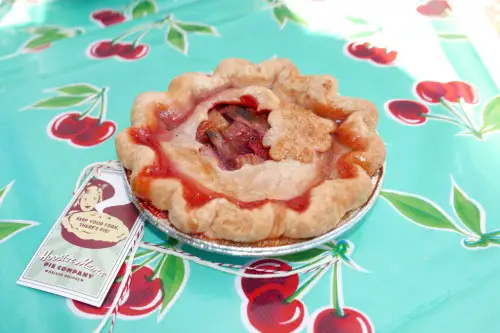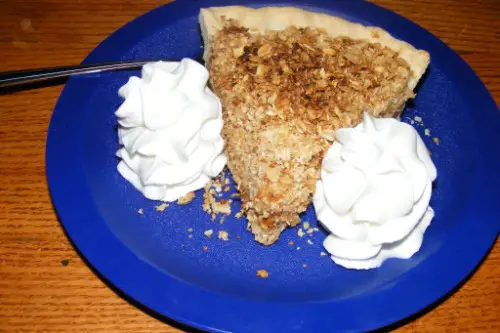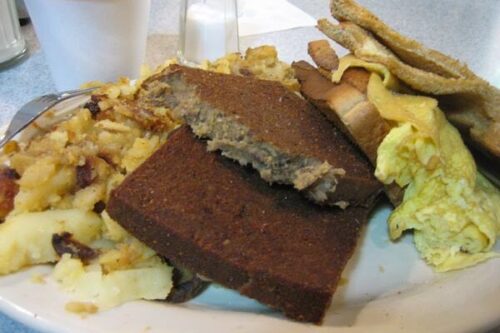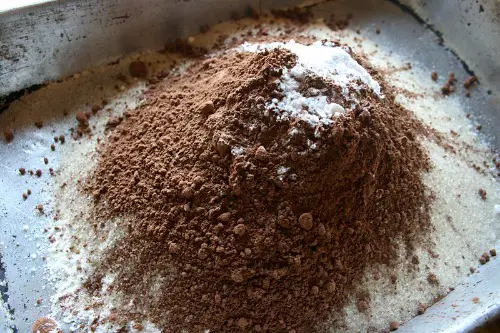1. Hoosier Pie

Hoosier pie, a beloved Depression-era dessert, was originally made from simple ingredients like buttermilk, flour, and sugar. This pie was an affordable treat that could stretch for large families during tough times. But over the years, the dessert faded from menus as ingredients became more specialized and hard to find. It also wasn’t as visually exciting compared to modern pies, and tastes shifted to richer or fruit-based alternatives.
For those who had a sweet tooth during the Great Depression, Hoosier pie was a comforting go-to, Kitchy Cooking shares. It’s a reminder of the ingenuity and resourcefulness of cooks during an era of scarcity. Now, it’s rare to find this dessert outside of regional areas, and even there, it’s more of a nostalgic nod than a common order. Many people have never even heard of it, as it hasn’t stood the test of time like apple or pecan pie.
2. Lutefisk

Lutefisk, a traditional Scandinavian dish made from dried fish reconstituted in lye, gained popularity in the U.S. during the Depression when cheap fish was more accessible. Though the process of making it was time-consuming and odd, it was cheap enough to feed a large family. However, the strong smell and unusual texture of lutefisk were off-putting to many, and over the years, it has become an acquired taste that very few people indulge in today, according to Atlas Obscura.
The dish was especially popular in regions with large Scandinavian-American populations, such as Minnesota, where it became a cultural staple. But even there, lutefisk has fallen out of favor over the years. While some people still enjoy it during Christmas gatherings, it’s largely forgotten in the day-to-day dining habits of most families. Its unique preparation and divisive taste have kept it firmly in the past.
3. Mock Apple Pie

Mock apple pie is exactly what it sounds like: a pie made without apples, 12 Tomatoes explains. Instead, it used Ritz crackers as a substitute to mimic the texture of apple slices. The original recipe gained popularity during the Depression when apples were scarce and expensive. Though it may sound strange today, this was a clever way to get a familiar taste and texture when times were tough.
Mock apple pie became popular as an alternative to traditional apple pie, which required fresh fruit that was hard to come by. While it tasted somewhat similar, the flavor was definitely an acquired one—mainly because of the crackers, which added a salty, buttery twist. In modern times, the dish has disappeared as apple pies made with fresh fruit have become the norm again. Unless you’re in a very specific part of the country, you won’t be seeing this peculiar pie on your dessert menu anytime soon.
4. Cornmeal Mush

Cornmeal mush was one of the most popular breakfast items during the Great Depression because cornmeal was cheap and easy to store, A Simple Home Cook explains. Cooks would simmer the cornmeal in water or milk to create a porridge-like dish, often serving it with butter, sugar, or syrup for a more palatable taste. While it provided a simple, filling meal, it’s now often overlooked in favor of more elaborate or health-conscious breakfast foods. The texture and taste weren’t the most appealing to modern palates, which has led to its decline.
Cornmeal mush was versatile, too—it could be fried into patties for a different texture, but either way, it wasn’t a dish that was particularly exciting. For those living through the Depression, however, it was an essential staple that filled bellies without emptying wallets. But as the popularity of oats, cereals, and smoothies grew, cornmeal mush faded into the background. It’s nearly impossible to find anyone who remembers it fondly today.
5. Beef Tongue

Beef tongue, once a cheap and hearty cut of meat, was a Depression-era staple used in many households. It was often boiled or slow-cooked and served as a main dish or used to make sandwiches. As a result, people got creative with ways to season and prepare it, finding new ways to make it palatable. Today, though, most people shy away from beef tongue due to its unappealing appearance and texture.
While beef tongue was considered a budget-friendly option in times of scarcity according to Atlas Obscura, it’s now largely regarded as an acquired taste. Over time, more accessible cuts of meat like chicken or ground beef became the go-to choices for most families. It’s not something you’ll see on typical grocery store shelves today unless you’re shopping at a specialty butcher. For many, the idea of eating something as exotic as tongue has lost its charm.
6. Spam

Spam, the canned meat product made from pork shoulder and ham, was a Depression-era lifesaver because it was inexpensive and had a long shelf life. It became a household name during World War II as people relied on it for a quick protein source when fresh meat was hard to come by. Though it still has its loyal fans, most people nowadays associate Spam with processed food, and it’s often met with skepticism.
Spam was embraced by resourceful cooks who found endless ways to incorporate it into meals, whether as a fried sandwich filling or served with scrambled eggs. Over time, though, as fresher and more natural meat options became accessible, Spam started to lose favor. It’s still seen as a nostalgic food by some, but it’s unlikely to ever regain the popularity it had during the Depression era. Now, you’re more likely to find it as a quirky option at a deli counter than a daily dinner ingredient.
7. Creamed Chipped Beef on Toast

Also known as “SOS” (stuff on a shingle), creamed chipped beef on toast was a meal that used dried beef, milk, and a thickened sauce, served over bread. It was a quick, easy, and filling meal for soldiers during World War II and for families during the Depression. While it served its purpose as a cheap and practical meal, the dish isn’t something you’ll find at most dinner tables today. Its flavor and creamy texture weren’t quite as appealing to modern tastes, leading to its fall from favor.
The dish also carried a bit of a reputation for being overly salty and bland. It was often served in military rations and became a comfort food for some, but many found it unappealing over time. Today, creamed chipped beef on toast is mainly seen in historical documentaries or retro cookbooks, with few modern-day chefs willing to bring it back to the menu. It’s certainly one of those Depression-era dishes that has remained a distant memory for most people.
8. Potato Sausage

Potato sausage was once a hearty, inexpensive dish that used the leftover parts of the pig, mashed potatoes, and a bit of seasoning to make a filling meal. It was a great way to stretch a small amount of meat, something that was crucial during the economic downturn of the 1930s. Today, potato sausage is nearly impossible to find on restaurant menus, as people have become more accustomed to leaner meats and more refined flavors. Sausages themselves are still popular, but this particular variation has fallen out of favor.
What makes potato sausage so representative of the Depression era is its use of every available resource. For many, it was a quick, no-frills dinner that could be cooked in bulk and stretched throughout the week. However, its combination of dense, starchy potatoes and fatty pork doesn’t quite fit modern dietary preferences, leading to its decline. Now, if you want to try it, you’d likely have to visit an old family home or a specialized regional market.
9. Scrapple

Scrapple, a breakfast food popular in the Mid-Atlantic region, was originally made from pork scraps, cornmeal, and spices. It was a way to use up the leftover bits of meat from a pig slaughter, providing a hearty meal that could be sliced and fried for breakfast. While it remains a niche comfort food in some parts of the U.S., scrapple hasn’t seen widespread popularity for decades. Its reputation for being made from undesirable cuts of meat, along with its strange texture, means it’s unlikely to make a comeback anytime soon.
The Depression-era version of scrapple was more about practicality than culinary enjoyment. Despite its humble origins, some still defend its status as a regional dish, especially among those who grew up with it. But outside of small pockets in Pennsylvania or Delaware, the dish isn’t something most people would eagerly try. It’s simply too tied to its frugal history to be embraced by a modern palate.
10. Wacky Cake

Wacky cake, often called Depression cake, was a product of rationing, using no eggs or milk in its recipe. Instead, it relied on vinegar, baking soda, and a simple mix of ingredients to create a cake that could feed a family with minimal expense. While it was a lifesaver when the pantry was bare, this no-fuss cake doesn’t have the same appeal in an era of designer cakes and cupcakes. The vinegar in the cake could leave an odd aftertaste, which didn’t help its longevity in the modern dessert world.
Despite its practicality, wacky cake has almost entirely disappeared from family recipe boxes. As baking evolved, recipes became more complex, and people began to look for more luxurious treats. Today, it’s more of a novelty, something you’d bake out of nostalgia rather than necessity. It still holds a spot in certain regional cookbooks, but it’s no longer a go-to dessert for most families.


